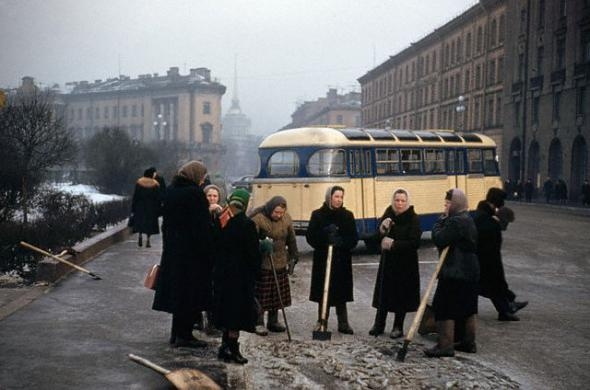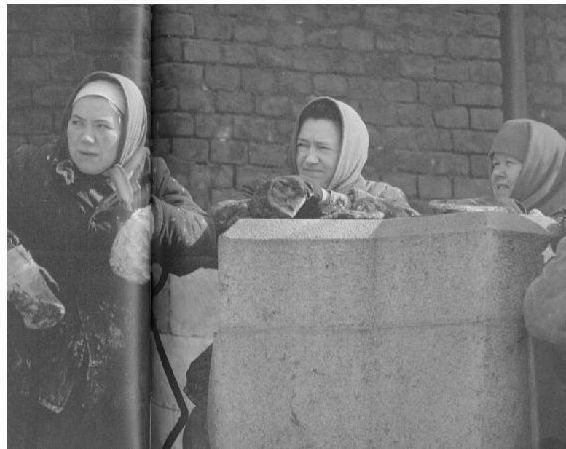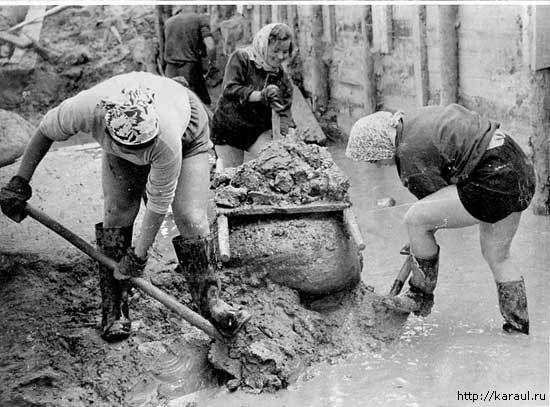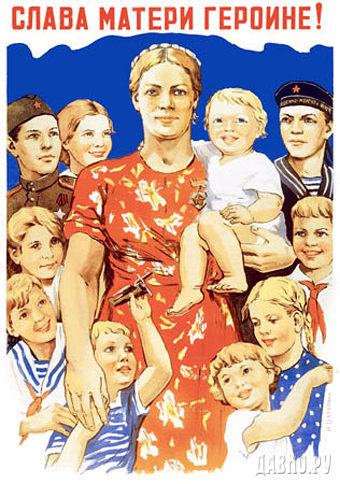A New Womanhood
By Chelsea Adler
Introduction
The Bolsheviks wanted to recreate society completely, creating an ideal world where all people were equal. This notion of equality included women, who up until this point, were limited to domestic work. Now women were expected to be a part of the workforce outside of their homes. Their roles within the family also changed with new Soviet policies. According to the Bolsheviks, women would gain independence from the traditional roles they had played in the past.
Particularly under Stalin’s regime, this ideal woman did not turn out exactly as planned. Instead of creating gender neutrality, women were not treated equally under the new laws. The attempts to create a new womanhood did change the way women were expected to behave, but they did not necessarily become the equal of their male counterparts. Also, not all of the changes that the Bolsheviks wanted took place. The Bolshevik idea of the “new family” did not take effect during Stalin’s time. Women were not freed from their roles as domestic leaders; in fact they now were forced to play a larger role at both work and at home. All of this led to a new type of womanhood, which was not necessarily what the Bolsheviks had wanted, but nonetheless was a major change for Soviet women.
Sources
General Background
Attwood, Lynne. Creating the New Soviet Woman: Women’s Magazines as Engineers of Female Identity, 1922-53. New York: Palgrave Macmillan, 1999.
In the aftermath of the Revolution, Bolsheviks were committed to creating a new type of person that would be willing to be subordinate to the interests of the rest of society. In particular, this applied to women, who were responsible for creating and shaping the next generation of Soviets. Attwood explores how this “new womanhood” was presented, based on two major women’s magazines of the time.
Chatterjee, Choi. Celebrating Women: Gender, Festival Culture, and Bolshevik Ideology, 1910-1939. 1st ed. Pittsburgh: University of Pittsburgh Press, 2002.
Chatterjee analyzes the festival of Women’s Day, which was adopted in 1913 by the Bolsheviks. The celebration of this festival shaped the ideal Soviet woman as a strong figure. Through this, Chatterjee examines how this defined the role of women in Communist society, and the construction of Soviet womanhood. By exploring the construction of gender within the confines of this festival, Chatterjee shows how the Bolshevik’s ideology was both put into practice and ignored with regards to women.
Lapidus, Gail Warshofsky. Women in Soviet Society: Equality, Development, and Social Change. Berkeley: University of California Press, 1978.
Officially, Soviets wanted to liberate women from their roles as domestic leaders. Lapidus looks at the consequences of the policies that the Soviets enacted in order to reach this goal. By looking at attempts to reach social equality, Lapidus determines how much equality women were actually afforded during this period. She examines how women measured up compared to their male counterparts of the time, and how this fit in with the established ideals of the Bolsheviks about women.
Reid, Susan E. “All Stalin’s Women: Gender and Power in Soviet Art of the 1930s.” Slavic Review 57, no. 1 (1998): 133-173.
Reid looks at visual representations of women during the 1930s, and how it plays into the Soviet ideal of women. In art of the time, women were meant to stand for the people as a whole, and were therefore portrayed as a subordinated group. In Soviet art, women fulfilled traditional gender roles, which reflect on the thinking of the time with regards to women’s rights. By examining art, one will see how women were perceived in popular thinking.
Stites, Richard. The Women’s Liberation Movement in Russia: Feminism, Nihilism, and Bolshevism, 1860-1930. 1978 Edition. Princeton: Princeton University Press, 1978.
Stites chronicles women in the pre-Bolshevik period through Stalin’s regime. This will be useful to see the changes in womanhood over time. He discusses the feminist responses to the changes that the Bolsheviks enacted, and how these changes affected gender politics in the country. Looking at how feminism coexisted with Bolshevism will help give a broader picture of women’s struggles during this time period.
Wood, Elizabeth A. The Baba and the Comrade Gender and Politics in Revolutionary Russia. Bloomington: Indiana University Press, 1997.
Wood explains the history of women’s issues in Russia, beginning with the traditional baba or the “backward” woman of the pre-Soviet time. Wood then chronicles the changes that were made to the expectations of women’s behavior in order to turn her into the Bolshevik vision of gender neutrality. The book focuses on the role that women played within the Communist Party, which will also show how women acted in public, political situations.
“Women in World History.” Roy Rosenzweig Center for History and New Media, 2006.
This website looks at the implications of Stalin’s policies on Soviet women. First, it gives a short background explanation of these policies. It also looks at newspaper articles and drawings of the time. These primary sources show what the attitude was towards women within the Soviet Union, and how different aspects of female life, such as education and work, were approached.
Women at Work
Goldman, Wendy Z. Women at the Gates: Gender and Industry in Stalin’s Russia. Cambridge: Cambridge University Press, 2002.
After the Revolution, the working class began growing. Goldman looks at how this affected women, who now entered the work force in droves. In contrast to their previous roles as domestic leaders, they now were working in the public sphere. As the country began to become more industrialized, women began working in factories. This changed gender roles very quickly over a short period of time.
Holmgren, Beth. Women’s Works in Stalin’s Time: On Lidiia Chukovskaia and Nadezhda Mandelstam. Bloomington: Indiana University Press, 1993.
Holmgren looks at two female writers of the Soviet time. By looking at the literary history of the time, one can determine how Stalin’s policies affected everyday life, especially for Soviet women. Specifically, these two women stand out as exemplary women of the time. Holmgren’s book explores the idea that the domestic sphere often served as a private place for rebellion against Stalin’s regime.
A propaganda poster on a Soviet mother’s “duty” to her children
Women and Families
Goldman, Wendy Z. Women, the State and Revolution: Soviet Family Policy and Social Life, 1917-1936. Cambridge: Cambridge University Press, 1993.
In this book, Goldman examines how Soviet womanhood played into the construction of the family. Bolsheviks originally wanted to reinvent the family, making more of a communal neighborhood environment. Eventually, this changed and more traditional family roles returned. Goldman looks at how women determined the future of the Soviet family.
Phillips, Laura L. “In Defense of Their Families: Working-Class Women, Alcohol, and Politics in Revolutionary Russia.” Journal of Women’s History 11, no. 1 (n.d.): 97–120.
Phillips looked at working class women and how they dealt with their family life. She explains the connection between family life, sexual practices, politics, and alcohol. These elements of women’s lives determined a lot about themselves. This social history gives a good background on daily life for Soviet women.



